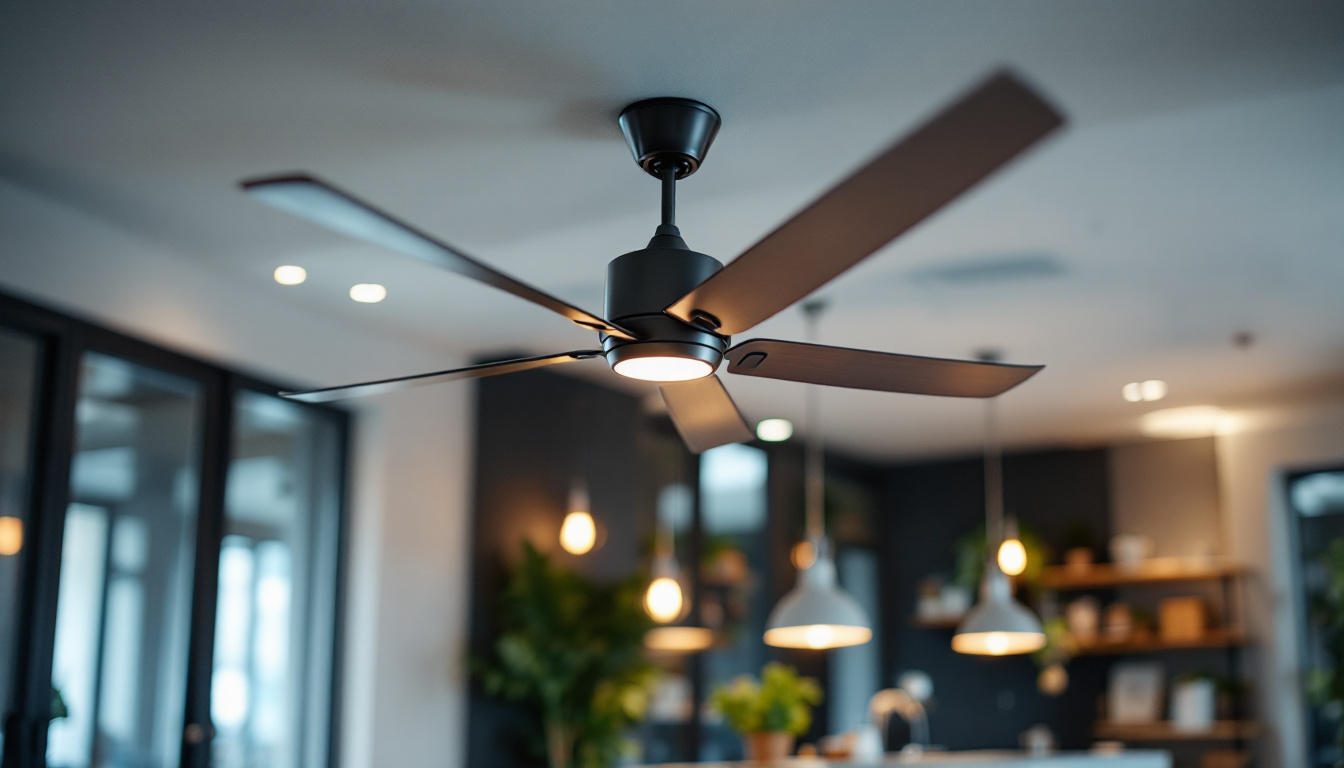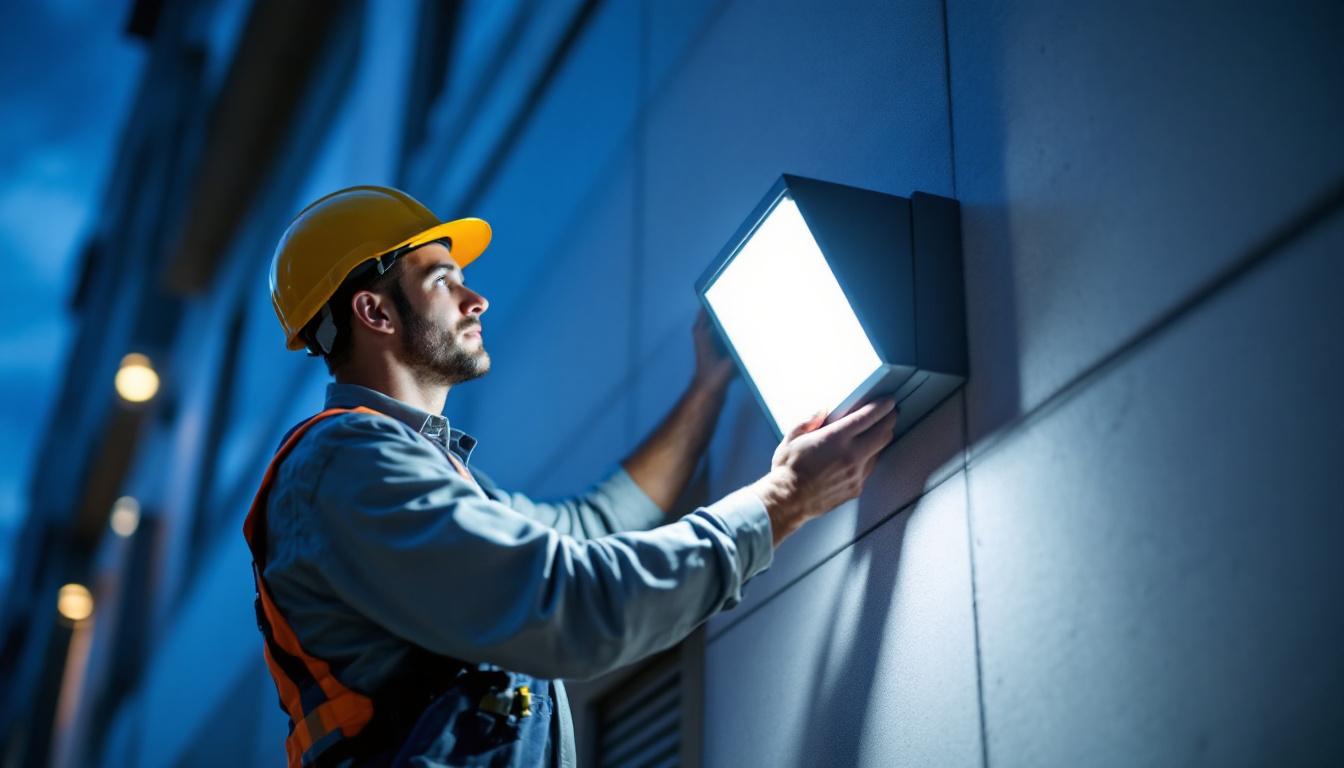
In the realm of commercial lighting installations, the significance of ceiling fans often goes unnoticed. However, these devices play a crucial role in enhancing both comfort and efficiency within various commercial spaces. By integrating commercial ceiling fans into lighting projects, contractors can not only improve the overall ambiance but also maximize profitability.
This article delves into the multifaceted benefits of commercial ceiling fans, exploring how they can complement lighting installations and contribute to a more sustainable and cost-effective environment.
One of the primary advantages of commercial ceiling fans is their ability to improve air circulation, which can significantly enhance the comfort level of employees and customers alike. In large spaces such as warehouses, retail stores, and restaurants, stagnant air can lead to discomfort and reduced productivity. By strategically placing ceiling fans, businesses can create a consistent airflow that helps maintain a pleasant temperature throughout the year, reducing the reliance on heating and cooling systems. This not only leads to a more enjoyable experience for patrons but also contributes to lower energy bills, making it a win-win situation for business owners.
Additionally, the aesthetic appeal of modern commercial ceiling fans cannot be overlooked. With a variety of designs, finishes, and sizes available, these fans can seamlessly blend into the overall decor of any commercial space. Whether it’s a sleek, contemporary design for a trendy café or a more traditional look for a classic retail store, the right ceiling fan can enhance the visual appeal of the environment. Moreover, many ceiling fans now come equipped with energy-efficient motors and smart technology, allowing for remote control and programmable settings. This integration of style and technology not only elevates the ambiance but also aligns with the growing consumer preference for eco-friendly and innovative solutions in commercial settings.
One of the primary advantages of commercial ceiling fans is their ability to improve energy efficiency. By circulating air throughout a space, these fans help maintain a consistent temperature, reducing the reliance on heating and cooling systems. This can lead to significant savings on energy bills, making it an attractive proposition for both contractors and clients.
In addition, many modern ceiling fans are designed with energy-efficient motors and blades that enhance airflow while consuming less electricity. This not only benefits the environment but also aligns with the growing demand for sustainable building practices. Furthermore, the strategic placement of ceiling fans can create a wind-chill effect, making occupants feel cooler without lowering the thermostat. This means that businesses can keep their settings a few degrees higher in the summer, further cutting down on energy consumption and costs.
Comfort is a key consideration in any commercial environment, whether it be an office, restaurant, or retail space. Commercial ceiling fans can create a pleasant atmosphere by providing a gentle breeze that helps regulate temperature. This is particularly important in larger spaces where heating and cooling can be uneven. The ability to create microclimates within a room allows for tailored comfort, accommodating the varying preferences of different occupants.
By ensuring that clients are comfortable, contractors can enhance the overall user experience, leading to increased customer satisfaction and repeat business. Additionally, a comfortable environment can boost employee productivity, making it a win-win situation for business owners. Studies have shown that well-ventilated spaces contribute to better focus and morale among employees, which can lead to improved performance and lower turnover rates. In environments like gyms or cafes, the right airflow can also help reduce odors and maintain a fresh atmosphere, further enhancing the overall experience for patrons.
Commercial ceiling fans come in a variety of styles, sizes, and finishes, allowing them to seamlessly integrate into diverse design aesthetics. Whether the space is modern, traditional, or industrial, there is a ceiling fan that can complement the existing décor. This adaptability is crucial for businesses looking to create a specific ambiance that resonates with their brand identity.
This design versatility not only enhances the visual appeal of a space but also provides contractors with the opportunity to upsell additional features. By showcasing stylish ceiling fans as part of a lighting installation, contractors can create a more cohesive and attractive package for clients. Moreover, many ceiling fans now come equipped with smart technology, allowing for remote control and integration with home automation systems. This added functionality appeals to tech-savvy clients and can be a significant selling point, as it enhances convenience and modernizes the overall experience within the commercial space.
The integration of commercial ceiling fans with lighting installations can create synergistic effects that enhance both functionality and aesthetics. For instance, strategically placed ceiling fans can help distribute light more evenly throughout a space, reducing shadows and creating a more inviting atmosphere.
Moreover, the combination of ceiling fans and lighting can lead to improved energy efficiency. By enhancing the effectiveness of lighting systems, ceiling fans can help reduce the need for additional fixtures, ultimately lowering installation costs and energy consumption.
When selecting a ceiling fan for a commercial space, several factors must be considered. The size of the room, ceiling height, and existing lighting fixtures all play a role in determining the most suitable fan. For instance, larger spaces may require multiple fans to ensure adequate air circulation, while lower ceilings may necessitate flush-mounted designs.
Additionally, it is essential to consider the fan’s motor type and blade design. High-quality motors can operate quietly and efficiently, while aerodynamic blades can enhance airflow. By educating clients on these aspects, contractors can help them make informed decisions that align with their specific needs and preferences.
While the initial investment in commercial ceiling fans may seem substantial, the long-term savings often outweigh the upfront costs. By reducing energy consumption and improving comfort, these fans can lead to significant reductions in utility bills over time.
Furthermore, the installation of ceiling fans can enhance the overall value of a commercial property. Spaces that prioritize comfort and energy efficiency are more likely to attract tenants or customers, ultimately leading to increased profitability for business owners.
Contractors can further assist clients by providing information on financing options for ceiling fan installations. Many energy-efficient models qualify for rebates or incentives, which can help offset the initial costs. By highlighting these opportunities, contractors can encourage clients to invest in ceiling fans as part of their lighting projects.
Additionally, offering flexible payment plans can make the decision to install ceiling fans more accessible for clients, ultimately leading to higher conversion rates for contractors.
The effectiveness of a ceiling fan largely depends on its placement and height. For optimal performance, fans should be installed at least 7 to 9 feet above the floor, allowing for adequate airflow without creating discomfort. In spaces with high ceilings, downrods may be necessary to ensure the fan is positioned correctly.
Moreover, the placement of ceiling fans should be strategic, taking into account the layout of the room and existing lighting fixtures. Fans should be positioned to maximize airflow while minimizing obstructions, ensuring that both comfort and aesthetics are maintained.
When installing ceiling fans, it is crucial to adhere to electrical safety standards. This includes ensuring that the electrical supply can support the fan’s motor and that proper wiring is in place. Contractors should also consider incorporating dimmer switches or remote controls to enhance user convenience and control over lighting and airflow.
By prioritizing electrical safety and functionality, contractors can provide clients with a seamless and reliable ceiling fan installation that complements their lighting system effectively.
To successfully market ceiling fans as part of lighting installations, contractors must educate clients on their numerous benefits. This includes discussing energy savings, enhanced comfort, and design versatility. Providing case studies or testimonials from satisfied customers can further bolster the argument for integrating ceiling fans into commercial spaces.
Additionally, offering demonstrations or showcasing ceiling fan models in a showroom can help clients visualize how these fans can enhance their spaces. By making the benefits tangible, contractors can facilitate informed decision-making and increase the likelihood of sales.
Contractors can maximize profitability by creating comprehensive packages that include both lighting installations and ceiling fans. By bundling these services, contractors can provide clients with a one-stop solution that simplifies the decision-making process.
Moreover, offering promotional discounts or incentives for clients who choose to install both lighting and ceiling fans can encourage higher sales volumes. This strategy not only boosts profitability but also fosters long-term relationships with clients, as they appreciate the convenience and value offered.
As the demand for energy-efficient and comfortable commercial spaces continues to grow, the role of commercial ceiling fans in lighting installations becomes increasingly important. By understanding the benefits, installation best practices, and marketing strategies associated with ceiling fans, lighting contractors can position themselves for success in this evolving market.
Incorporating ceiling fans into lighting projects not only enhances the overall aesthetic and comfort of a space but also contributes to long-term energy savings and increased profitability. As businesses strive to create inviting environments for customers and employees alike, the integration of commercial ceiling fans will undoubtedly play a pivotal role in shaping the future of commercial lighting installations.
Ready to elevate your commercial lighting installations with the added benefits of premium ceiling fans? Look no further than LumenWholesale, where we provide contractors with top-quality, spec-grade lighting and ceiling fan products at unbeatable wholesale prices. Say goodbye to inflated markups and hello to superior products that meet the highest industry standards. With our hassle-free bulk buying and free shipping, you can ensure your projects shine with reliability and high performance. Don’t compromise on quality or value—Wholesale Lighting at the Best Value is just a click away. Enhance your installations today and experience the LumenWholesale difference.

Explore the rising significance of exterior wall lights in the lighting industry.

Explore the transformative impact of fluorescent tubes on modern lighting design and installation.

Discover innovative strategies and expert insights in “Fancy Light: Maximizing Success for Lighting Contractors.” Learn how to elevate your business, enhance client satisfaction, and stay ahead in the competitive lighting industry..

Discover innovative hacks and tips for smart lighting contractors to maximize efficiency and creativity with LED wall pack light fixtures.